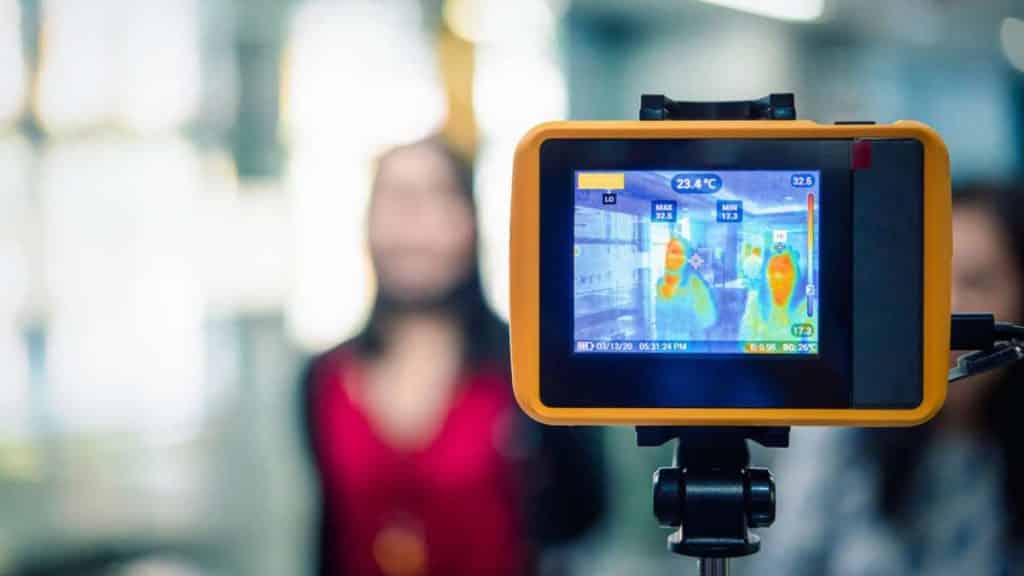A new survey conducted by McKinsey & Company found that the pandemic has sped up the adoption process of technology by three to four years for most organizations. And the share of digital-enabled products in their portfolios has accelerated by seven years.
Interact with the executives of most leading companies, and they will tell you that they have adopted technological solutions to meet their new workplace demands. Also, the executives believe that these solutions are here for the long haul. Companies have executed successful responses to this crisis with a range of technology capabilities.
With two-thirds of offices reopening and for employees visiting the office at least three days a week, the need to have a flawless sign-process in place is essential. In the US, 54% of the employees showed concern over workplace exposure to the virus.
A digitally-driven process such as contactless sign-in helps companies,
- manage health risks
- maintain social distancing protocols
- supervise workplace management
It further stresses the need for technological ratification in a post-pandemic hybrid workplace. But what is the contactless sign-in process? How has technology changed the sign-in process? Keep reading to learn more.
What is the Contactless Sign-in Process?
A year and a half back, a person staffing the reception desk and managing employees’ entry and exit to the workplace was normal. HR managers tracking attendance was accepted. Facility managers keeping track of space utilization was typical.
But as we mentioned, the crisis has changed our workplace. In the hybrid era, management is much more of a challenge than most will admit to. It has to be contactless.
RFID cards were early signs of technological endorsement. What might be considered the earliest way of contactless sign-ins was practical for an extended period. However, the crisis has allowed organizations to evolve their technological game and update to QR codes.
Connected to a central software, employees schedule themselves and get unique QR codes to complete the sign-in process. These QR codes can capture attendance while providing access to the office premises. These are also dynamic, thus eliminating the chance to copy them. Owing to this technological advancement, the return to office process is completely contactless.
How Has Technology Changed the Hybrid Workplace Sign-in Process?
A contactless sign-in procedure creates a frictionless experience for the returning employees. It has streamlined not one but several processes. As we mentioned earlier, a tech-supported sign-in process can provide access to the office while capturing attendance. This means that adopting technology has removed any barrier that existed in our pre-pandemic workplaces.
Some of the most notable changes in the sign-in process as a result of tech acceleration can be summarized as follows:
1. Keeping the Process Organized
A tech-enabled sign-in method keeps the process organized. Once an employee schedules a visit to the office, a unique QR code is generated. As they reach the office, they need to scan the QR code at the gate. From attendance to monitoring capacity, every little detail can be captured, resulting in a transparent and efficient workplace.
The modern workplace is built on efficiency; with just one scan, an employee can save a significant amount of time.
2. Helping Manage Cost
Okay, let’s be honest. RFID tags are a considerable cost for any organization. From getting the equipment to implementation to maintenance, the costs can be anything from $1200 to $20,000 each, depending on the type. On the other hand, a contactless sign-in solution that generates unique QR codes for your employees costs less.
Also, a physical sign-in process will require dedicated personnel to handle it. A SaaS tool can eliminate such costs as well.
3. Giving Customization Options
A contactless sign-in process can be customized to suit the needs of an organization. For instance, a company can include a health questionnaire to complete the scheduling process (that is, before an employee is given the QR code). To comply with the pandemic rules, many companies also implement a mask detection system before signing in.
A SaaS solution that offers digital sign-in will integrate all of this, creating a seamless experience.
4. Detecting Maximum Occupancy & Implementing Social Distancing
Most organizations implementing a return to the office are keen to monitor their maximum occupancy. It is vital to maintain social distancing and eliminate any situation that may spread the virus. A tech-enabled sign-in process can help workplace admins know the number of people in the office at any given time.
A single dashboard can help them analyze their workplace and make more detailed decisions regarding occupancy.
To Conclude
Our workplaces have changed. And technology has become the driving factor. These technological developments we are making today are here to stay. The sign-in process has been integral to our workplaces. We have to wait and see what further advancements we make in the coming days.
Angela Spearman is a journalist at EzineMark who enjoys writing about the latest trending technology and business news.

